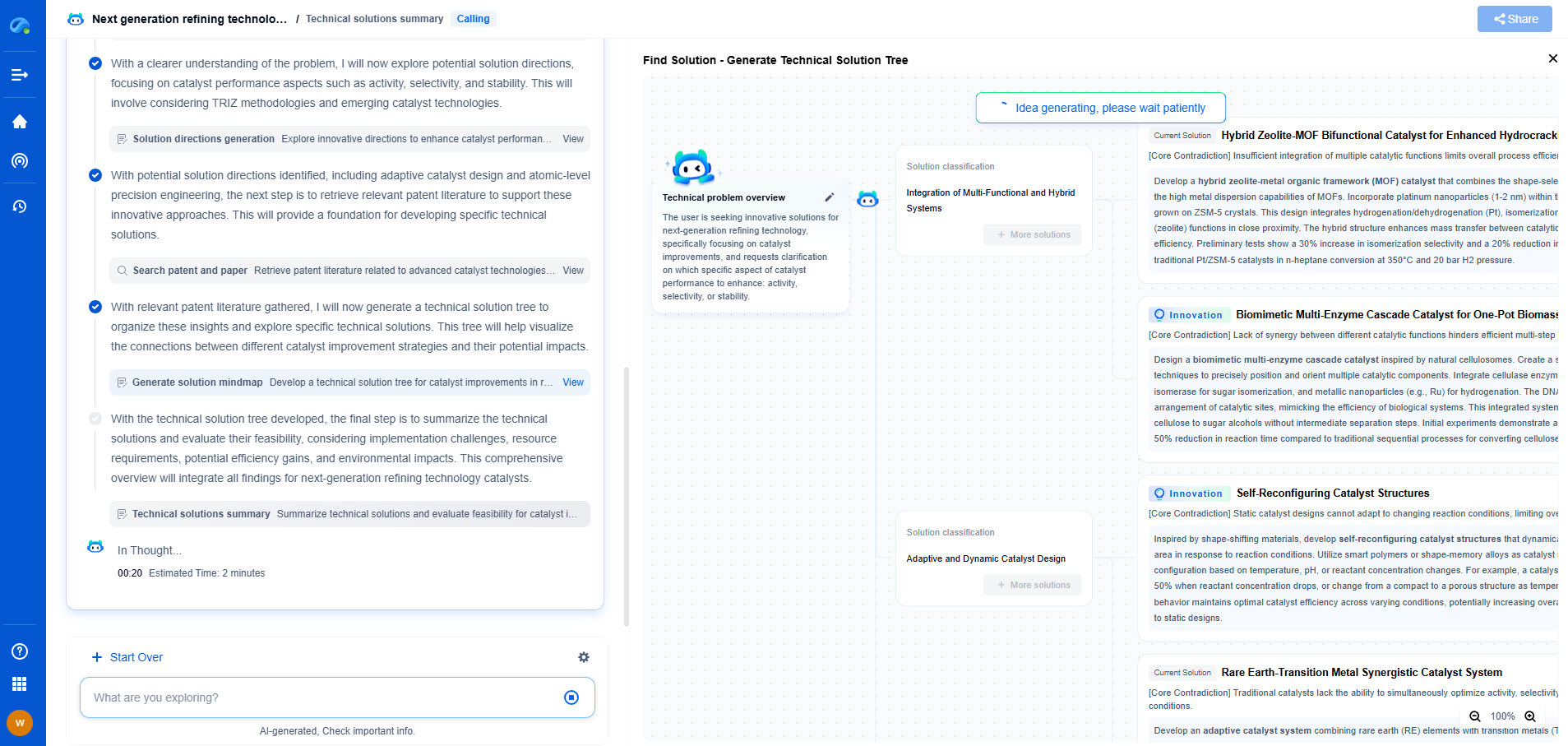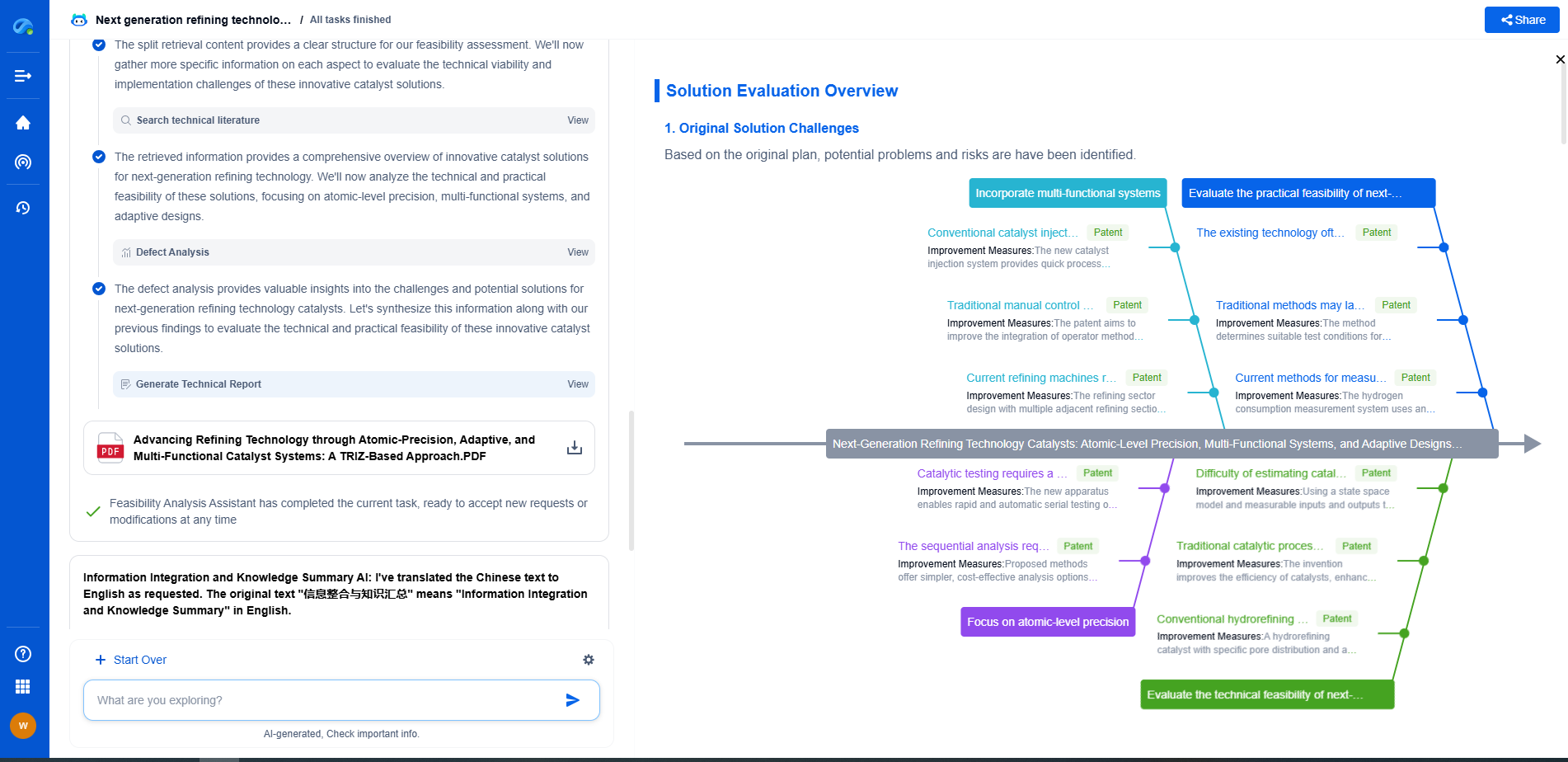Selecting Strain Gauges Based on Stress Range and Environmental Conditions
JUL 14, 2025 |
Selecting the right strain gauge is crucial for accurate stress measurement in various engineering applications. Strain gauges are used to measure the amount of deformation or strain in a material, providing essential data for assessing structural integrity, fatigue, and performance. When selecting strain gauges, it is important to consider the stress range and environmental conditions to ensure reliable and precise readings. This blog will guide you through the key considerations in choosing strain gauges based on these factors.
Understanding Stress Range
The stress range is a fundamental factor to consider when selecting strain gauges. Strain gauges come in different types and models, each designed to handle specific stress levels. The stress range refers to the amount of mechanical stress that a structure or component will experience during its operation. Selecting a strain gauge with an appropriate stress range ensures that it can accurately measure the expected levels of deformation without saturating or failing.
There are generally two types of strain gauges based on the stress range: low-stress and high-stress strain gauges. Low-stress strain gauges are typically used for applications where the deformation is minimal, while high-stress strain gauges are designed for applications involving significant stress or load. It is important to match the strain gauge's range to the expected stress levels to ensure accuracy and durability.
Environmental Considerations
Environmental conditions play a critical role in strain gauge selection. Factors such as temperature, humidity, and exposure to chemicals or other harsh elements can significantly impact the performance of strain gauges. Selecting a strain gauge compatible with the expected environmental conditions helps maintain accuracy and prolongs the lifespan of the gauge.
Temperature is one of the most critical environmental factors to consider. Strain gauges are often subjected to varying temperatures, which can cause thermal expansion or contraction, affecting the accuracy of measurements. Temperature-compensated strain gauges are designed to minimize these effects, ensuring precise readings across a range of temperatures.
Humidity and moisture exposure can also influence strain gauge performance. In environments with high humidity or frequent exposure to water, strain gauges with protective coatings or waterproof features are recommended to prevent damage and ensure reliable measurements.
For applications involving exposure to chemicals or corrosive substances, strain gauges made from corrosion-resistant materials or with protective coatings are essential. These gauges are specifically designed to withstand harsh environments without degrading, ensuring consistent performance over time.
Material Compatibility
The material on which the strain gauge will be applied is another important consideration. Strain gauges need to be compatible with the substrate material to ensure accurate measurements. Different materials have varying coefficients of thermal expansion, which can affect the gauge's readings. Selecting a strain gauge with a similar coefficient of thermal expansion to the substrate material helps reduce error and improves accuracy.
Adhesives used to bond the strain gauge to the substrate material also play a role in performance. The adhesive must be compatible with both the gauge and the substrate, providing a strong and durable bond that can withstand the environmental conditions and stress levels.
Gauge Configuration
The configuration of the strain gauge is an essential factor in selection. Strain gauges come in various configurations, including single-element, rosette, and biaxial gauges, each designed for specific measurement requirements.
Single-element strain gauges are used for measuring strain in one direction and are suitable for applications where the principal stress direction is known. Rosette strain gauges, on the other hand, consist of multiple elements arranged in a specific pattern, allowing for measurement of strain in multiple directions. These are ideal for complex stress analysis where the direction of stress is unknown or varies.
Biaxial strain gauges are designed to measure strain in two orthogonal directions and are commonly used in applications where planar stress is involved. Selecting the appropriate gauge configuration based on the measurement requirements ensures accurate and meaningful data collection.
Conclusion
In conclusion, selecting the right strain gauge involves considering several factors, including the stress range, environmental conditions, material compatibility, and gauge configuration. By carefully evaluating these factors, you can choose a strain gauge that provides accurate and reliable measurements, ensuring the success of your engineering application. Strain gauge selection is a critical step in the design and analysis process, allowing for precise stress measurement and enhanced structural performance.
From 5G NR to SDN and quantum-safe encryption, the digital communication landscape is evolving faster than ever. For R&D teams and IP professionals, tracking protocol shifts, understanding standards like 3GPP and IEEE 802, and monitoring the global patent race are now mission-critical.
Patsnap Eureka, our intelligent AI assistant built for R&D professionals in high-tech sectors, empowers you with real-time expert-level analysis, technology roadmap exploration, and strategic mapping of core patents—all within a seamless, user-friendly interface.
📡 Experience Patsnap Eureka today and unlock next-gen insights into digital communication infrastructure, before your competitors do.
- R&D
- Intellectual Property
- Life Sciences
- Materials
- Tech Scout
- Unparalleled Data Quality
- Higher Quality Content
- 60% Fewer Hallucinations
Browse by: Latest US Patents, China's latest patents, Technical Efficacy Thesaurus, Application Domain, Technology Topic, Popular Technical Reports.
© 2025 PatSnap. All rights reserved.Legal|Privacy policy|Modern Slavery Act Transparency Statement|Sitemap|About US| Contact US: help@patsnap.com

